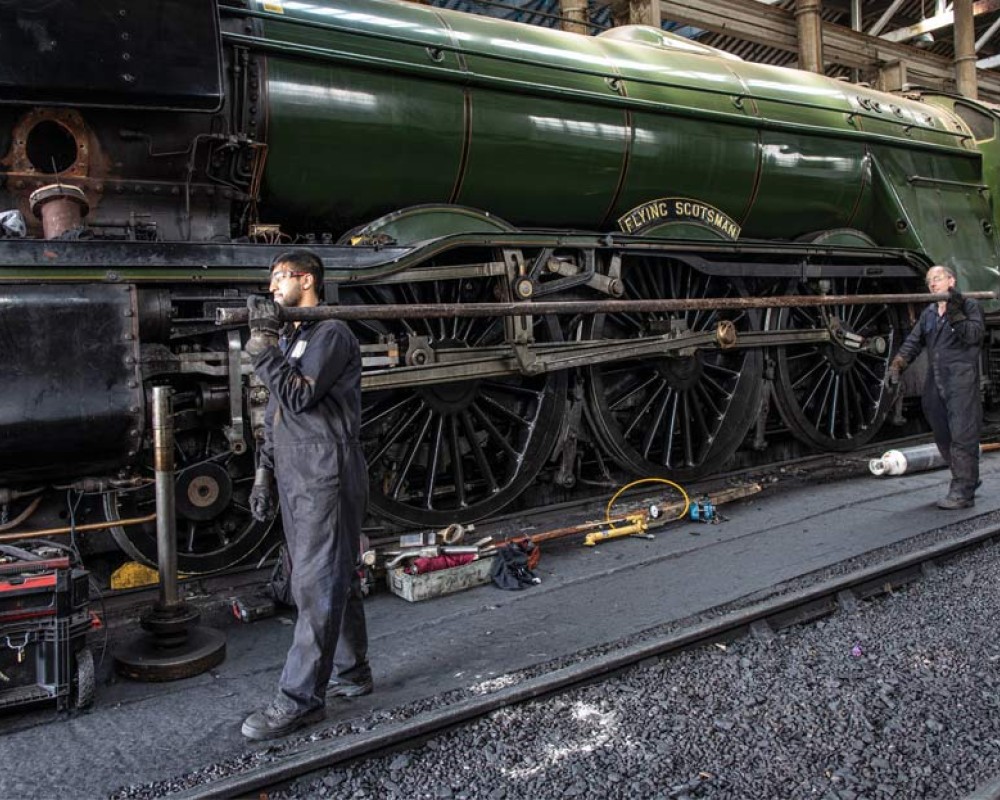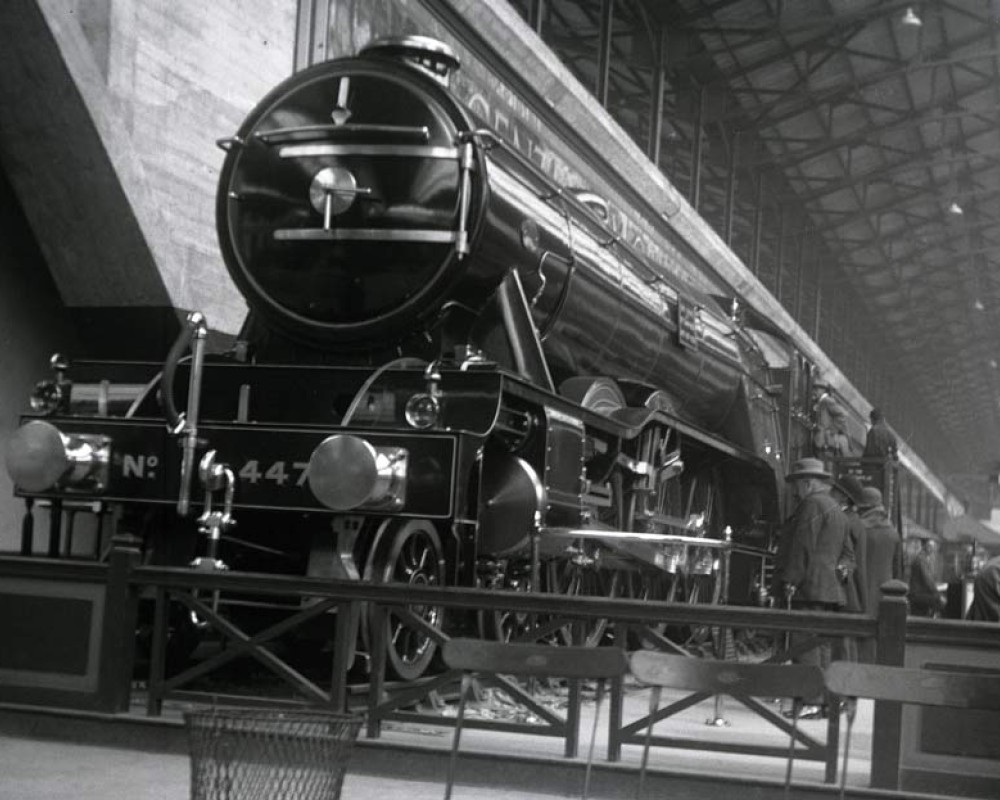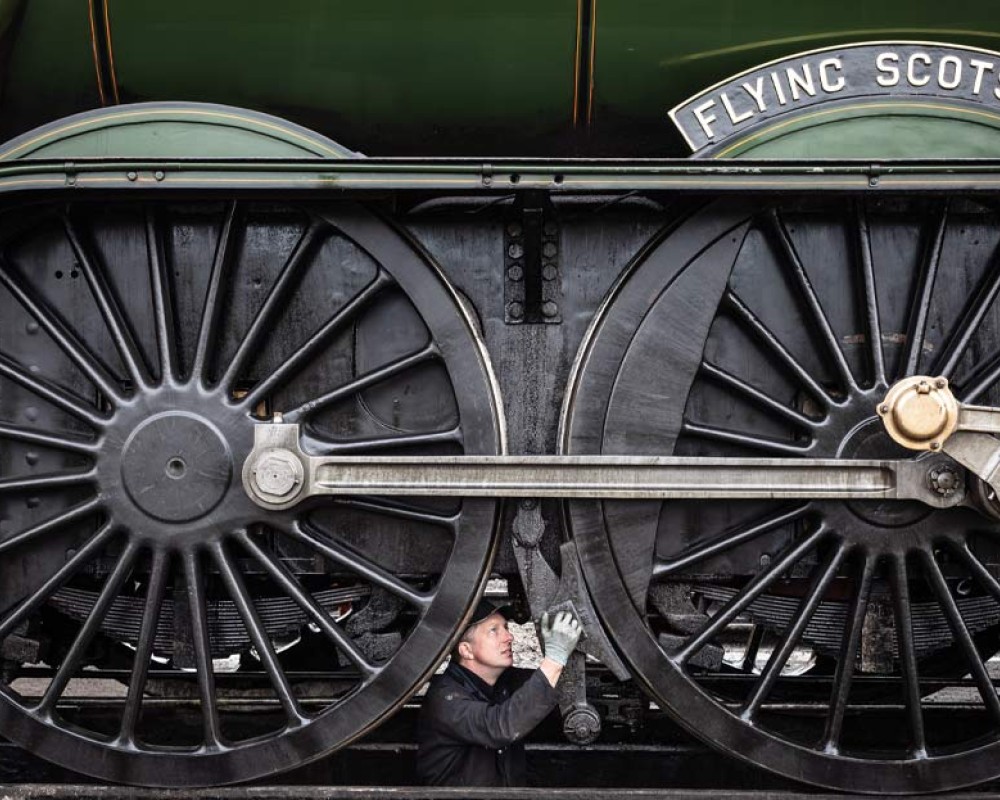
A golden age steam superstar
Tracking the history of the world’s most iconic steam locomotive ahead of her exciting visit to Norfolk
ABOVE: © Olgun Kordal / Science Museum Group
Winding through sleepy villages, patchwork fields and cities alike, the railway unites us all. Where now simple, faceless trains clinically convey travelers from one station to the next, the haunting cry of a whistle once rang out and steam curled through the air. In June that long forgotten sound will be heard again as the world’s most famous steam locomotive makes her way through the East Anglian countryside in celebration of her centenary year. Flying Scotsman is coming to Norfolk.
When she left Darlington works in 1923, one of the first ‘Pacific’ class 4-6-2 locomotives produced to the design of the ingenious engineer Sir Nigel Gresley, few could have predicted she would go down in history and still be hauling passengers 100 years later. At 97 tonnes and 70ft long, Flying Scotsman was commissioned by the London and North Eastern Railway (LNER) to run long-distance express passenger trains on the East Coast Main Line. The most notable journey was from London to Edinburgh, from which the name Flying Scotsman originated.
Flying Scotsman soon became the flagship locomotive for the LNER, representing the company at the British Empire Exhibition and becoming the first steam engine to reach the officially authenticated speed of 100 miles per hour on 30th November 1934. Sadly, by the 1960s steam was falling from favour and the decision was taken to remove her from service in 1963. By that time Flying Scotsman had covered an incredible 2.08 million miles. Facing the ignominy of the scrapman’s torch the engine was rescued by businessman Alan Pegler, who purchased her for £3500. He immediately set a programme of restoration work into motion, including a repaint, the removal of her smoke deflectors and a new tender.
Alan Pegler sought to take his steam locomotive overseas to the USA and Canada to share the magic of British steam engineering and to advertise British exports. The tour began in 1969 and ran until 1971, covering 15,400 miles. Supporting this tour took its toll on Alan Pegler’s finances however, leaving Flying Scotsman stuck in the USA at the end of the venture. In 1973 she was rescued by Sir William McAlpine, who had purchased her for £25000, and repatriated her to Liverpool. From here she made her way, under her own steam, to the workshops at Derby, where she underwent restoration.



PICTURES: Restoration work on Flying Scotsman was undertaken by Riley & Son for the NRM © Steve Morgan / Science Museum Group (left and right). Representing the LNER at the Wembley Exhibition in 1924 © The Board of Trustees of the Science Museum - National Railway Museum (middle).
In 1988 Flying Scotsman was on the move again, this time to Australia at the request of the Australian government to play a part in the country’s bicentenary celebrations. Whilst in Australia she covered 28,000 miles and in 1989 set another world record for the longest non-stop run made by a steam locomotive at 422 miles.
After 23 years of steady ownership, Sir William McAlpine put Flying Scotsman up for sale due to financial difficulties. She was purchased together with a set of coaches for £1.5 million by entrepreneur Tony Marchington in 1996. A subsequent extensive overhaul followed, estimated to have cost another £1 million, before the engine was sold to the National Railway Museum (NRM) in 2004.
The NRM secured Flying Scotsman with a bid of £2.3 million, raised by the general public, the National Heritage Memorial Fund and Sir Richard Branson. “Flying Scotsman is one of the most famous steam locomotives in the world and it’s a real privilege for the National Railway Museum to own such an iconic and much-loved engine,” says Andrew McLean, the museum’s Assistant Director & Head Curator. “It became the poster engine for the LNER, helping to advertise their daily 10am route from London King’s Cross to Edinburgh Waverley and became the first steam engine to officially reach 100mph.” A final, complete and total restoration was undertaken by the NRM at a cost of £4.2 million, with the engine finally returning to the rails in 2016.
"Throughout 2023, the locomotive will haul a series of special tours across the country, including through Norfolk to Great Yarmouth in June, to mark its very special birthday"
2023 marks 100 years since the world’s most famous steam locomotive left the Darlington Works, and a programme of events are in place to mark this special occasion. “In its centenary year, we want to offer as many people as possible, young and old, the chance to see Flying Scotsman and help us celebrate the birthday of this incredible feat of engineering,” says Andrew, “Throughout 2023, the locomotive will haul a series of special tours across the country, including through Norfolk to Great Yarmouth in June, to mark its very special birthday.”
Other commemorations include a collectable £2 coin from the Royal Mint, a set of stamps designed by David Gentleman, a poem from Poet Laureate Simon Armitage and an all female crew in honour in international women’s day. This is a locomotive dear to everyone’s heart, regardless of age or gender.
The Flying Scotsman is an icon, her last visit to Norfolk was in the Autumn of 2021, where her appearance at the Mid Norfolk Railway caused exceptional excitement and brought steam into the lives of thousands of people. A glimpse of this majestic engine on her route through Norfolk this year will bring that joy to people once again.

ABOVE: Flying Scotsman pictured in Dereham during her visit to the Mid Norfolk Railway in 2021. © Mr Ian Sharman
